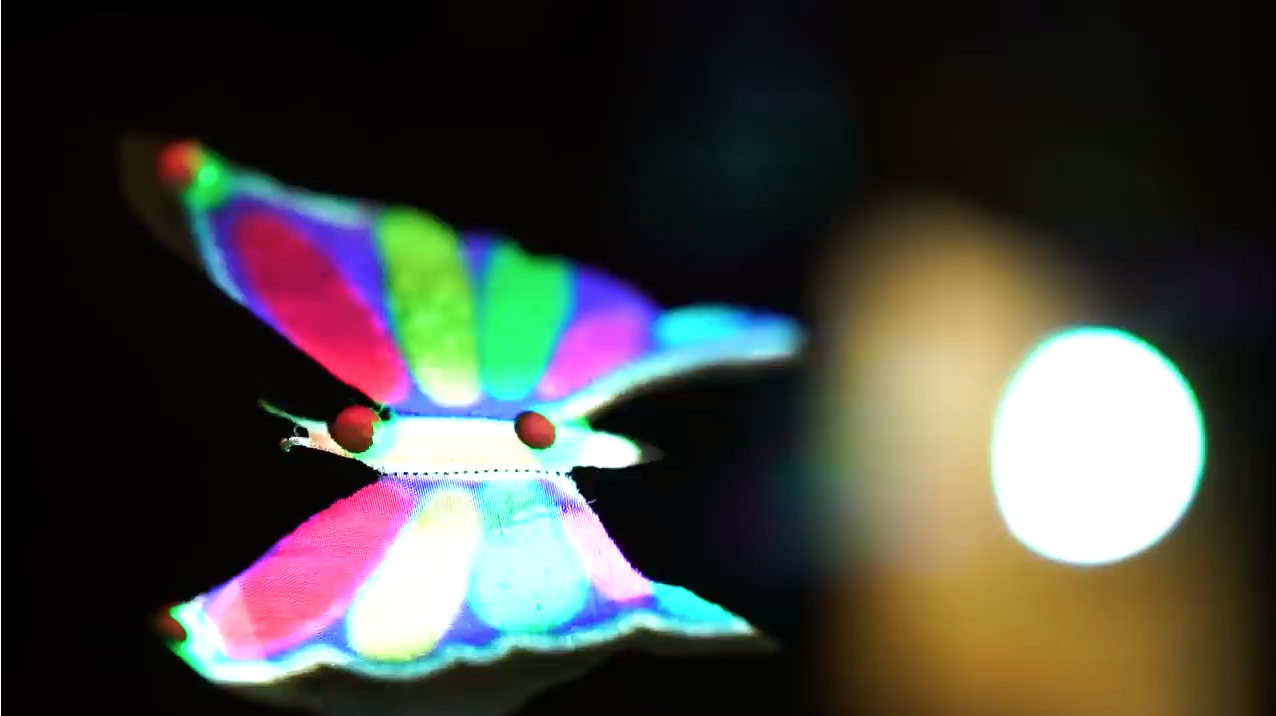Could Star Wars-style holograms soon be a reality?
New gadget beams 3D projections that can talk and interact with people

Holograms that can interact with humans may sound like the stuff of galaxies far, far away but scientists say such technology could soon be available on our own planet.
Researchers at the University of Sussex have created a device that projects floating 3D images like those familiar to fans of the Star Wars films.

“I believe that in the future, such displays will allow us to interact with our family and friends as if they are close by, so you can see, touch and hear them,” said Ryuji Hirayama, who helped make the hi-tech gadget.
The Week
Escape your echo chamber. Get the facts behind the news, plus analysis from multiple perspectives.

Sign up for The Week's Free Newsletters
From our morning news briefing to a weekly Good News Newsletter, get the best of The Week delivered directly to your inbox.
From our morning news briefing to a weekly Good News Newsletter, get the best of The Week delivered directly to your inbox.
What is a hologram?
“Like a photograph, a hologram is a permanent record of the light reflected off an object,” says the Explain that Stuff site.
Holograms are created by splitting a beam of light, usually a laser, so that part of it bounces off an object before hitting a recording medium such as photographic film. The other part of the beam shines directly on the film, which then records the difference between the two parts.
Interference between the two beams as they intersect is then used to create a three-dimensional representation of the original object, explains tech news site Lifewire.
A free daily email with the biggest news stories of the day – and the best features from TheWeek.com
Holograms can be seen with the naked eye and can be viewed from multiple angles. The viewer’s perspective when looking at a hologram determines what they see, just as with a real-life 3D object.
However, the technology currently available to produce holograms is very limited - creating moving images is difficult, and the size, viewing angle, frame rate and depth of the projected image are all restricted.
What have scientists invented?
The Sussex University scientists have created objects that appear to be suspended in thin air by using a 3D field of ultrasound waves to float a polystyrene bead and then whip it about at high speed to trace the shape it makes.
The 2mm bead can trace out the shape of an object in less than 0.1 of a second, meaning the brain doesn’t see the bead - only the shape it sketches out. The object’s colours come from LEDs built into the display that shine light on the fast-moving bead.
In fact, these images are not technically holograms but rather “volumetric displays”, which means they are free of the limitations of holograms. They can be viewed from any angle and even be made to appear to speak, the researchers explain in a paper published in Nature journal.
And manipulation of the sound field can allow users to interact with the images and even feel them.
The objects the researchers can create can currently only exist inside a 10cm-wide cube of air, but future displays using multiple beads at once could create much larger shapes.
Euan Freeman, a human-computer interaction researcher at the University of Glasgow, told The Guardian that the technology may be a taste of the future.
“With this technology, you could reach out and feel the digital images shown in the display,” he said. “The ultrasound waves move through the air to create precise patterns against your hands. This allows multimedia experiences where the objects you feel are just as rich and dynamic as the objects you see in the display.”
What are the alternatives?
Computer Generated Imagery (CGI) is often used in films to create objects that are looking ever more life-like.
And CGI objects are no longer confined to the 2D screen. In 2012, a computer-generated image of rapper Tupac Shakur, who was killed in 1996, appeared onstage alongside Snoop Dogg at California’s Coachella music festival.

The trick was pulled off using an angled piece of glass placed on the stage that reflected the CGI from a projector image shining onto another screen that was invisible to the audience.
In a more recent example of hi-tech “magic”, Argentinian football club Estudiantes de La Plata celebrated the opening of their new stadium this week by unleashing a giant CGI lion into the grounds.

-
 Cryptocurrency and the future of politics
Cryptocurrency and the future of politicsIn The Spotlight From electoral campaigns to government investments, crypto is everywhere and looks like it’s here to stay
-
 Ssh! UK libraries worth travelling for
Ssh! UK libraries worth travelling forThe Week Recommends From architectural delights to a ‘literary oasis’, these are some of the best libraries around the country
-
 A fentanyl vaccine may be on the horizon
A fentanyl vaccine may be on the horizonUnder the radar Taking a serious jab at the opioid epidemic
-
 Why Fortnite and EA titles are under scrutiny from MPs
Why Fortnite and EA titles are under scrutiny from MPsIn Depth The grilling comes after Prince Harry claimed that Fornite was ‘created to addict’
-
 Why everyone’s talking about loot boxes
Why everyone’s talking about loot boxesIn Depth US senator proposes ban on controversial in-game spending. Here’s the story so far
-
 Star Wars Jedi: Fallen Order - reviews, gameplay trailer, release date and where to order
Star Wars Jedi: Fallen Order - reviews, gameplay trailer, release date and where to orderIn Depth Critics get their hands on the new single-player game - here’s what they have to say
-
 The seven best tech gifts for Star Wars fans this Christmas
The seven best tech gifts for Star Wars fans this ChristmasIn Depth From remote-controlled drones to Darth Vader luxury watches, here are the best movie-inspired gadgets
-
 E3 2017: F1 2017, Metroid Prime 4 and more
E3 2017: F1 2017, Metroid Prime 4 and moreIn Depth From Forza Motorsport 7 to BioWare's Anthem, here are the most exciting games at this year's expo
-
 Star Wars Battlefront II: reviews, new features and release
Star Wars Battlefront II: reviews, new features and releaseThe Week Recommends It may be ‘bigger and better’ than its predecessor, but there are some caveats
-
 Rainbow Loom: the craze that makes the internet look good
Rainbow Loom: the craze that makes the internet look goodIn Depth The rubber-band bracelet craze: ‘somehow digital feels better when it produces something real’